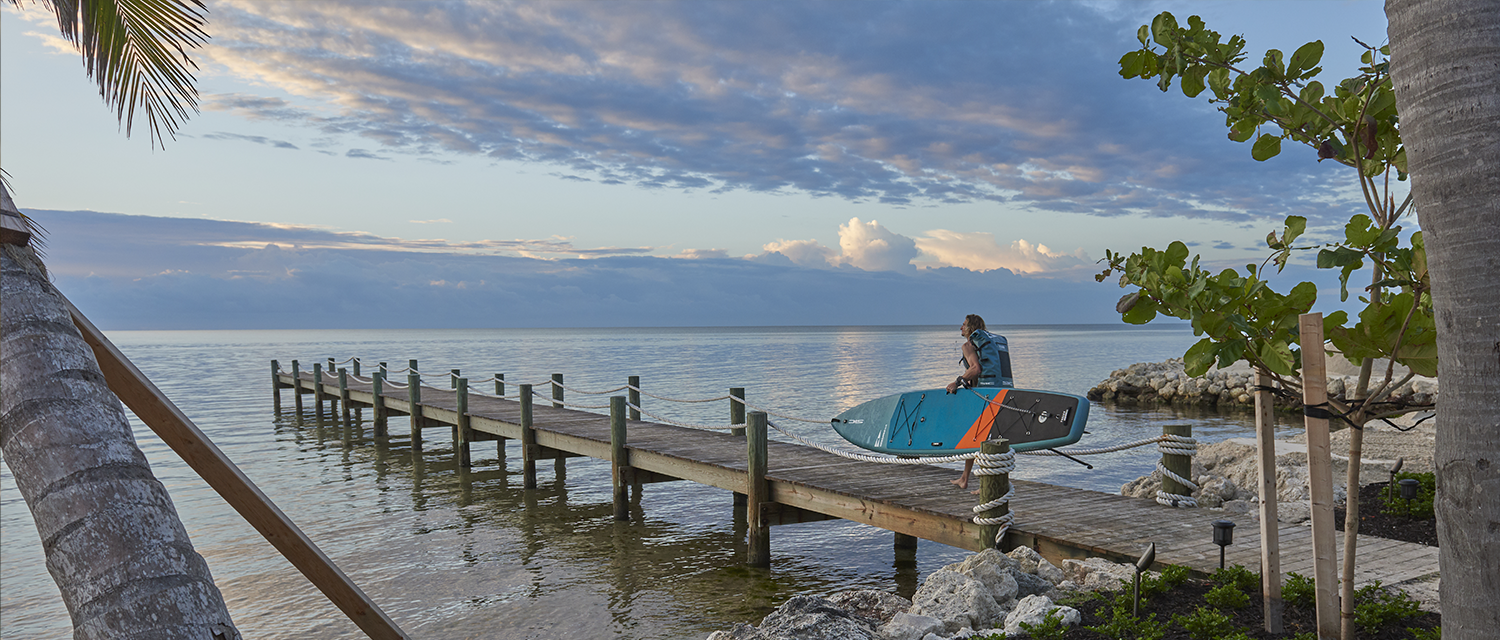

If you’re looking to spend more time on the water, but aren’t up for an overnight adventure, a day trip is the way to go. Day trips are great for all ability levels and give you the feel of a multi-day paddle, without having to haul a bunch of extra equipment. If you’re looking to attempt a longer paddle, there are a few things to consider before heading out: location, route, weather, equipment, and most importantly, safety.
Here, we run through everything you need to know to stay safe and have fun on the water.
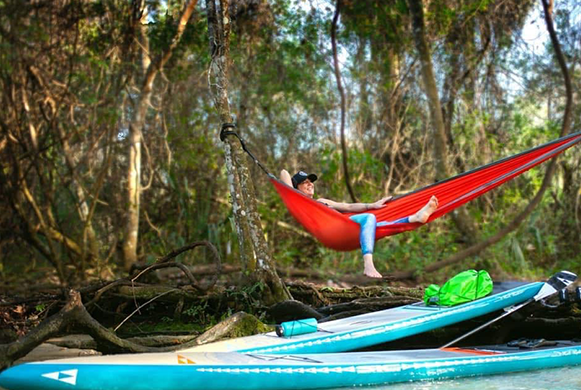

LOCATION, LOCATION, LOCATION
When choosing a location for a day trip, you’ll want to factor in your skill level. While paddling down Class III rapids may sound like a fun experience, if you’re new to paddling it probably isn’t your best bet. If you’re a beginner or intermediate paddler, or are simply looking for a mellow paddle, try paddling in a protected bay, on a calm lake, or along the coast.
If you’re an intermediate paddler, consider a lake crossing, flowing rivers, or a harbor where you can safely navigate boat traffic. If you’re an advanced paddler, spend the day paddling in the open ocean, along a long stretch of coastline, or down a class II river. If you’re not sure of your skill level, error on the side of an easier paddle and then work your way up as you feel more comfortable.
PLAN YOUR ROUTE
After you’ve decided where you’re going to paddle, you’ll want to plan out your route based on paddling time. Paddling time verses distance is a safer way to plan a trip and ensure you won’t run out of steam. When doing so, you’ll also want to take your skill level into consideration. While everyone is different, we typically recommend beginner paddlers try a 2-3 hour day trip, intermediate paddlers a 3-4 hour trip, and advanced paddlers 4-6 hours.
The milage you cover will depend on wind, water conditions, and your paddling speed. To better help you determine how long it takes to paddle a distance and plot your trip, do a distance time test in conditions you normally feel comfortable paddling. Paddle for one mile and mark your time. Note, paddling for one mile will feel very different than paddling for three!
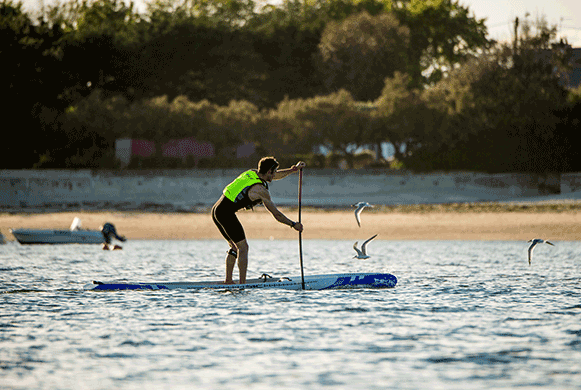

Once you’ve decided how far you’re going to go, determine whether you want your paddle to be one-way or round trip. One-way trips are fun because you’ll see new scenery the entire way and if you everything lines up, you can paddle downwind most of the time. The only challenge of one-way trips is that they require more planning upfront: you’ll either need to drop off a car at the finish or arrange for someone to pick you up. Roundtrip paddles require a lot less planning but more likely than not, you’ll be paddling upwind or against the current at some point. If roundtrip is your only option, it’s best to paddle against Mother Nature when you are fresh and use her to your advantage on the ride back.
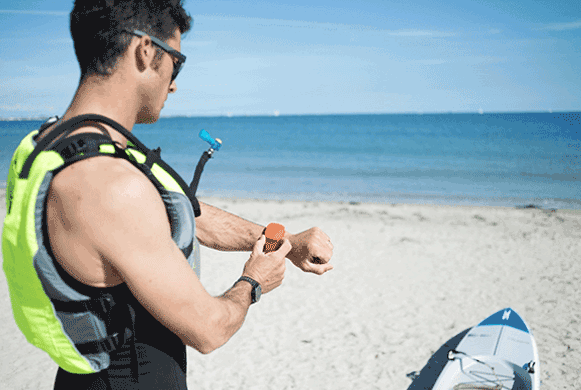

CHECK THE FORECAST
If you’re going to attempt a long paddle, you’ll want to set yourself up for success by making sure you pick a day when the weather and conditions are optimal. Check the weather and pick a day that’s sunny and warm for your paddle. But not too warm. Check if rain is in the forecast and if it’s anything more than a light drizzle, consider rescheduling. In addition to the weather, check the wind. Which direction is it going? Is it going to shift directions throughout the day?
It can also be worthwhile to check the water conditions to make sure the water quality is good should decide to jump in and cool off mid-paddle (we recommend it). Knowing the wind and weather predictions can be helpful in choosing your day and route to ensure the best possible experience.
PACK WISELY
If you plan on being on the water for an extended period, it’s important to make sure you have everything you need for the day.
In addition to water, we recommend packing an extra layer of clothing, snacks, sunscreen, a map, and a phone. As you paddle more, you’ll get an idea of what’s important for you and alter your packing list accordingly.
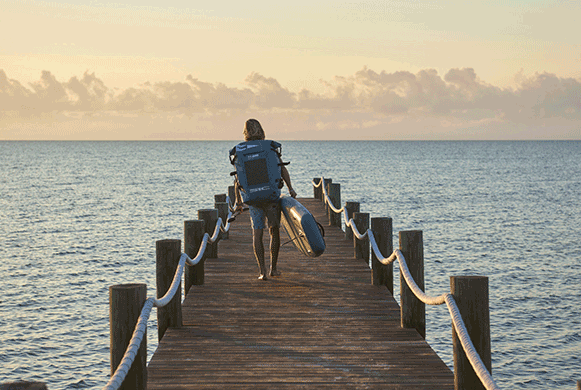

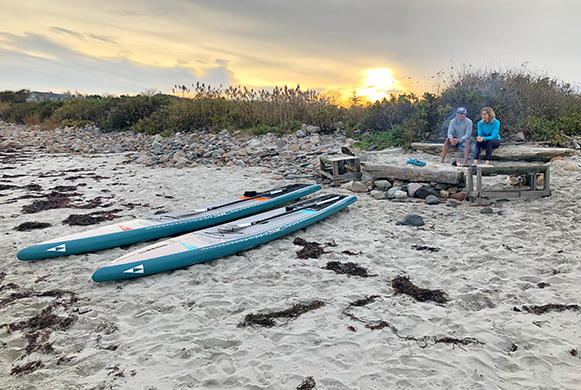

FILE A FLOAT PLAN
If you’re not familiar with a float plan, it’s pretty much what the name suggests: a plan that informs someone where you’re going to float. It’s always a good idea to file a float plan in case of an emergency. Your float plan should include where you’re going, how long you expect to be gone, where you plan to put it/take out, and what time you expect to be back.
Give your float plan to someone you trust and let them know how long they should wait past your expected return time to call for help. Although the chance of something going astray is unlikely, it’s always better to be safe than sorry.
BOARD SELECTION
When selecting your board for the day, you’ll want to consider the conditions you’ll be paddling in as well as your skill level. All around boards have a rounded nose and are super stable and easy to paddle, but they are not the most efficient board for paddling long distances. Touring boards have a nose that is pointed, similar to a kayak or boat, making them ideal for covering more ground. The nose is designed to cut through the water, so they are more hydrodynamic than an all around model. A raceboard is going to be the fastest, but also the least stable, option.
If you’re an experienced paddler and are focusing on speed, a raceboard is probably your best bet. If you’re not sure, try starting out on an all-around model and then experiment with other types of boards as you get more comfortable.
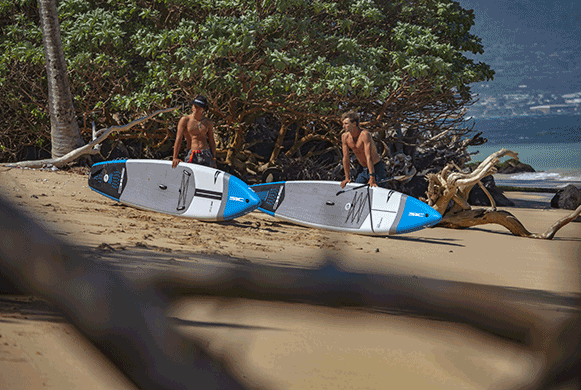

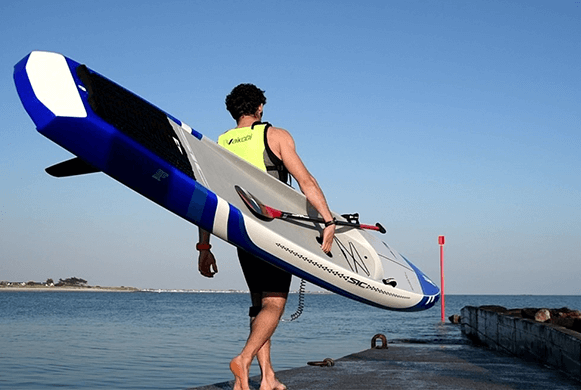

SAFETY GEAR
Safety is always a priority when paddling. In addition to filing a float plan, it’s important to wear a leash to ensure your board doesn’t get away from you if you fall in. Your most critical piece of gear is your personal flotation device (PFD). Belted PFDs are worn around the waist like a fanny back and are the least obtrusive option while paddling—you must pull a string to inflate. Full vested PFDs tend to be a bit more cumbersome, however, you don’t have to activate them to float.
If you are not a good swimmer, a full vested PFD is the best choice. Regardless of what type of PFD you choose, make sure it has the Coast Guard stamp of approval. If there’s a chance you’ll be out when it’s dark, make sure you have some sort of light aboard your vessel as well.

